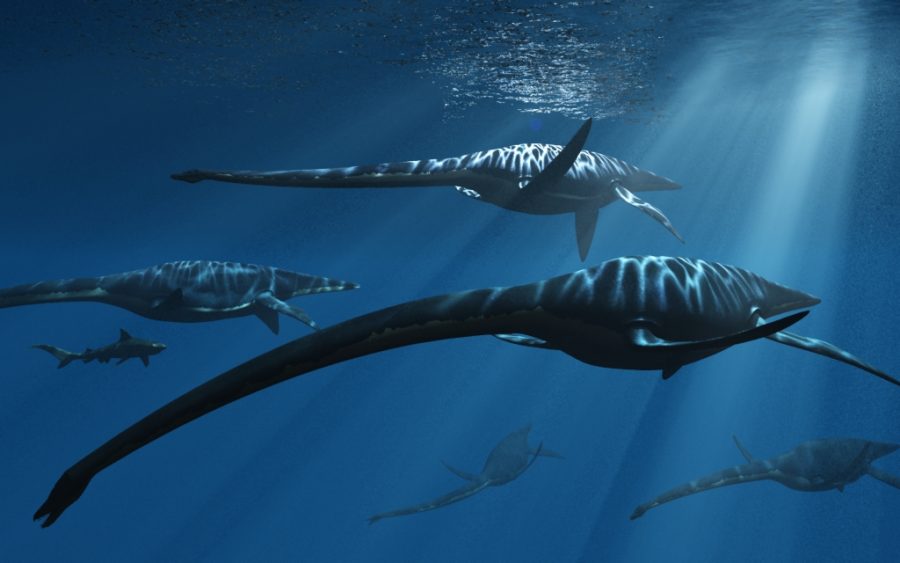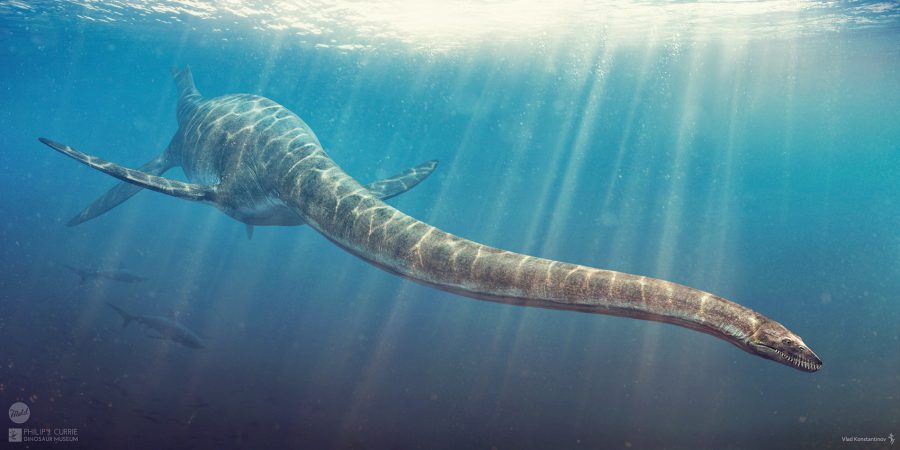David Bradt, a ranch manager residing in Montana, discovered the fossil of an unidentified plesiosaurus, classified as an elasmosaurids.
Plesiosaurs are known to have up to 78 vertebrae, but the recently-discovered specimen appears to have no more than 40. The specimen was named Nakonanectes bradti, honoring the Nakona people of northeastern Montana and Bradt, who first found the remains.

A casual encounter with a plesiosaurus
Bradt was hunting elk at the Charles M. Russell National Wildlife Refuge where he eventually found what he thought was petrified wood coming out from a rock. He examined the object and saw that it was a massive fossilized vertebra. At first, he believed it had to be from a cow but then realized that it could be a dinosaur’s. Bradt thought it could be from a triceratops, but little did he know that millions of years ago, there was a marine environment on the refuge where he was hunting.
Elasmosaurs lived all over the world, but the fossil found by Bradt appeared to be almost intact. Just as he spotted the remains, he took pictures and contacted the Museum of the Rockies and the U.S. Fish and Wildlife Service. Researchers took three days to fully excavate the fossil.

The initial find was made in 2010, and just now researchers were able to identify the specimen. Elasmosaurs belong to plesiosaurs, which are maritime, long-necked, carnivorous dinosaurs that can grow up to 30 feet long, with over half of their length corresponding to their massive necks.
The specimen was named MOR 3072, and its neck appears to measure only 7.5 feet long. It seems to have lived alongside its larger relatives, which puts to rest the theory that elasmosaurids evolved over the course of millions of years to achieve such long necks.
“These features are convergent with the Southern Hemisphere clade of short-necked Maastrichtian elasmosaurids, Aristonectinae, and demonstrate multiple origins of short-necked body proportions from longer-necked ancestors within Elasmosauridae,” reads the study, published in the Journal of Vertebrate Paleontology.
MOR 3072 appears to be one of the smallest adult elasmosaurids discovered, besides having a complete skull, 23 of its cervical vertebrae, most of its dorsal and caudal column, pectoral and pelvic girdles, and parts of its limbs and ribs in a decent state.
The first elasmosaurid was described in 1868 from a fossil discovered in Kansas. At first, researchers believed that these species had an immense tail instead of an elongated neck, leading them to place the head on the wrong end of the fossil. This has been attributed to Edward Drinker Cope, who found the specimen, being an expert on lizards, which do usually have tails longer than their necks.
Elasmosaurs could not raise their bodies out of the water, only being able to peek the surface using their heads. This is mainly because their bodies weighed so much that their necks could not sustain the head up in the air. Researchers believe that their necks helped the species stalk schools of fish, as the water pressure generated by their bodies was far greater than that of their tiny heads as they approached unsuspecting prey.
Source: Journal of Vertebrate Paleontology
